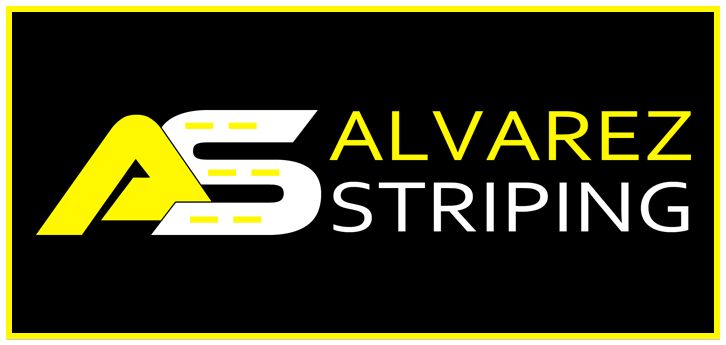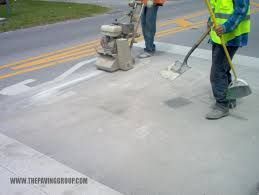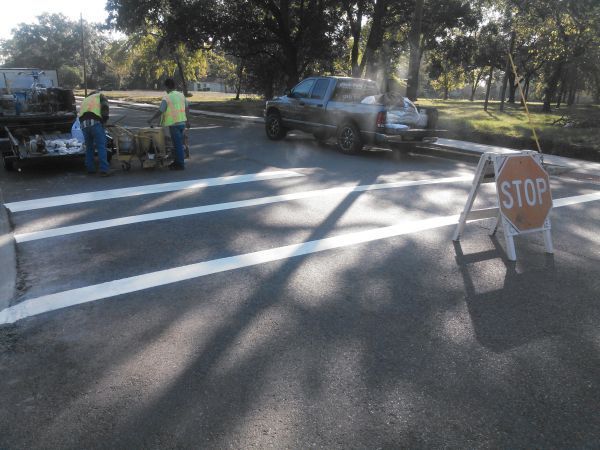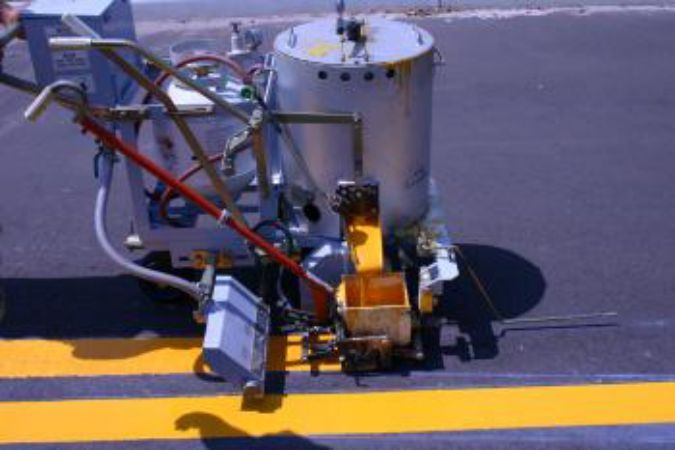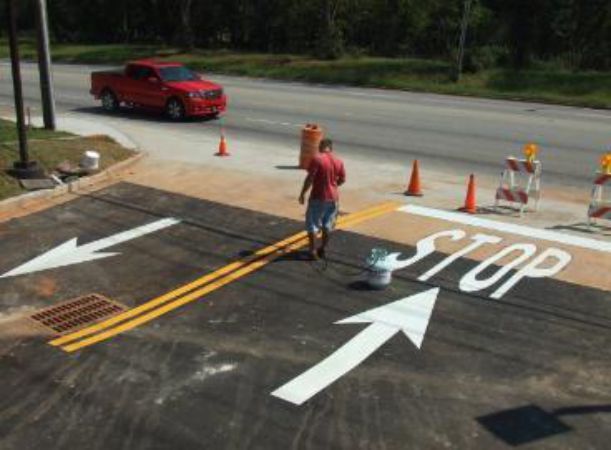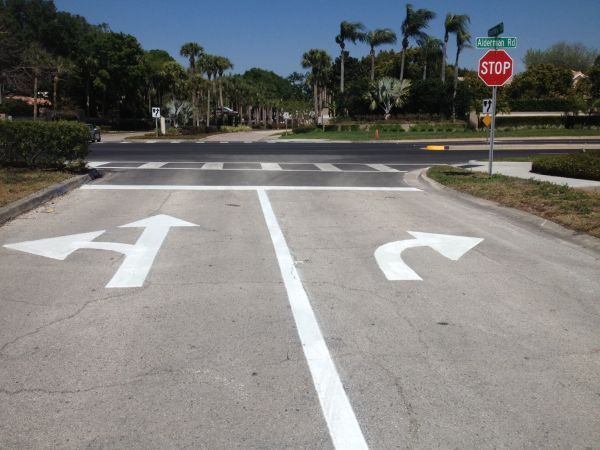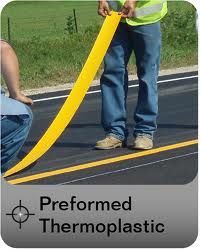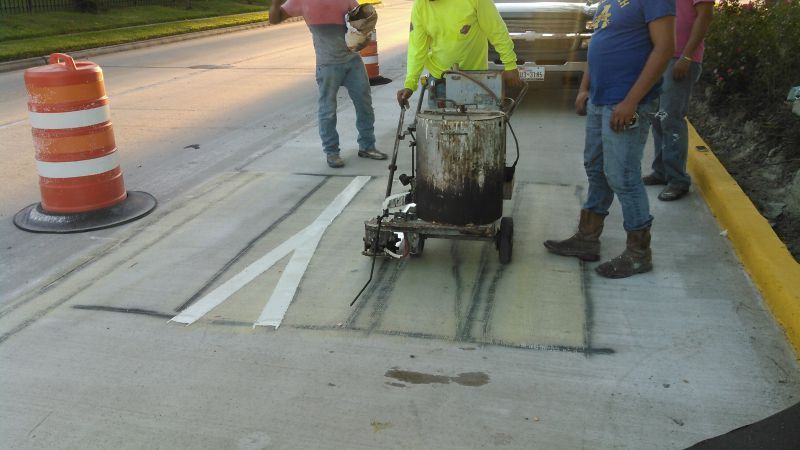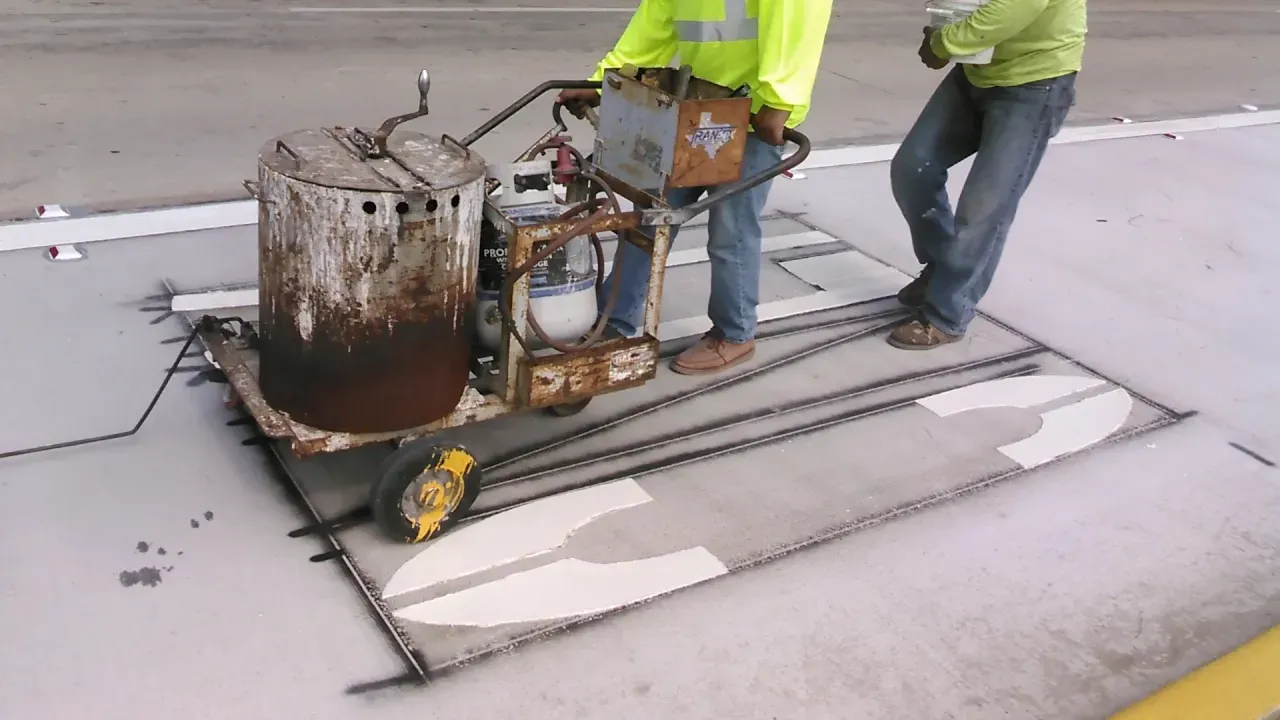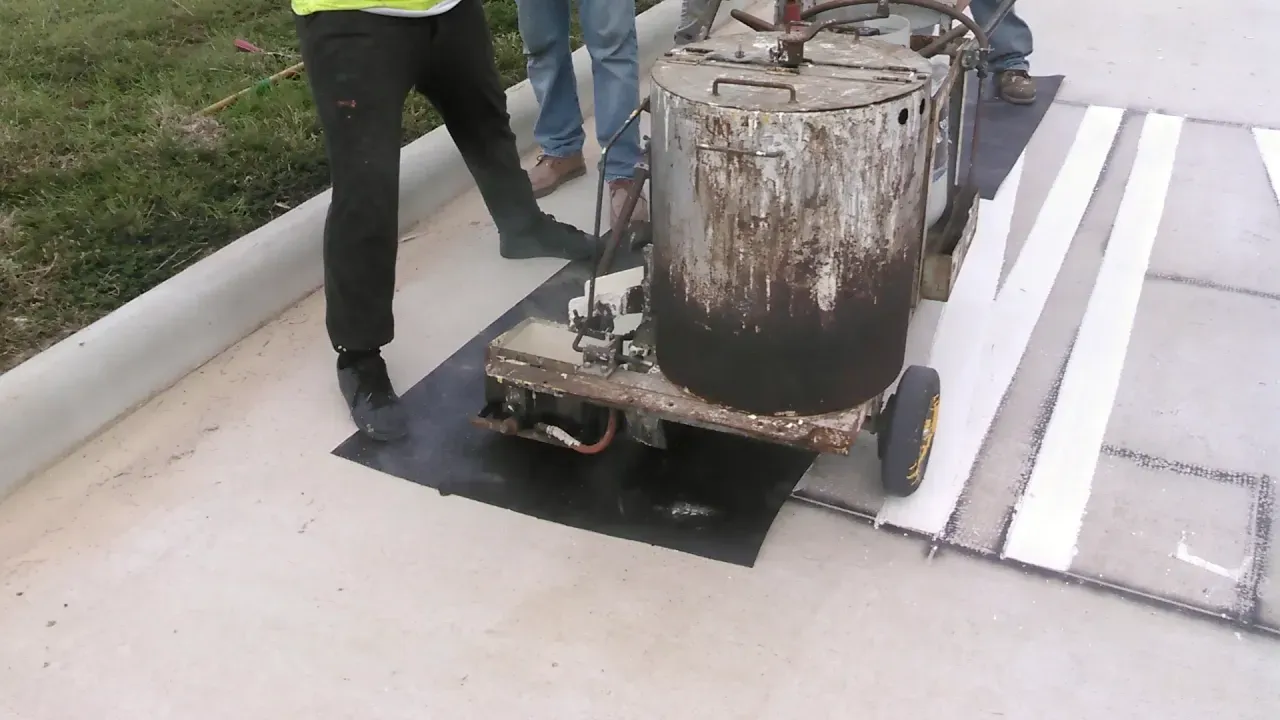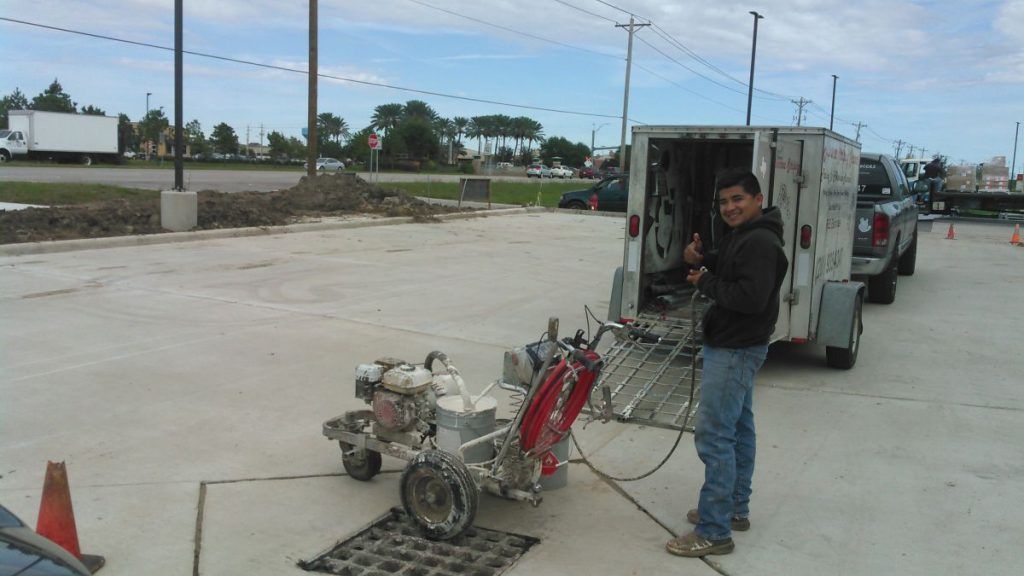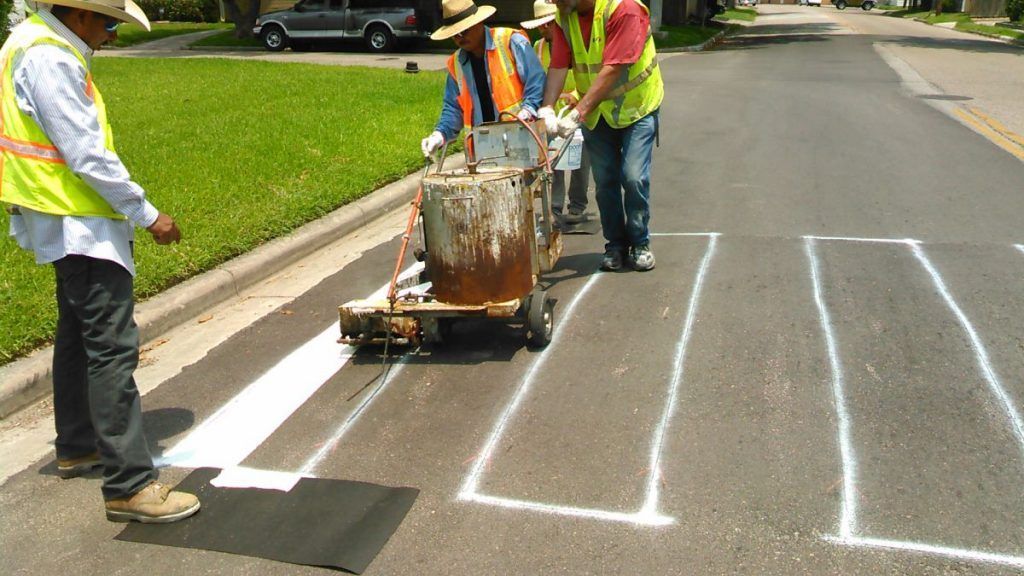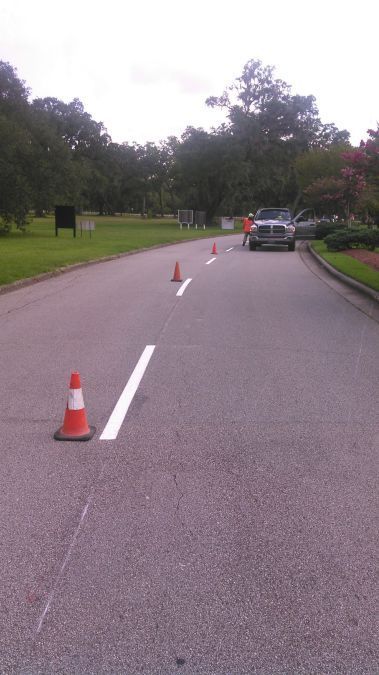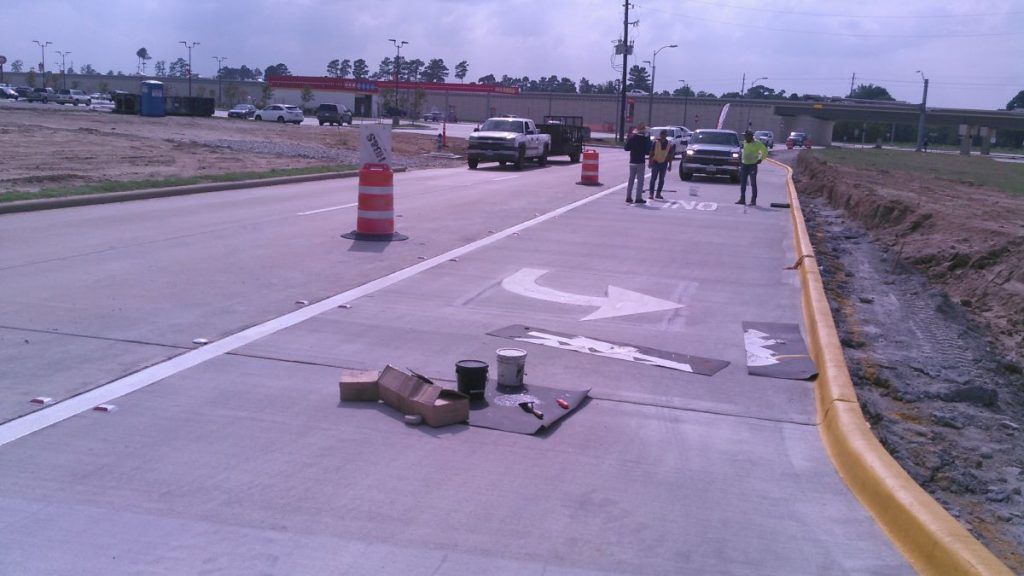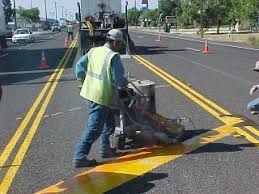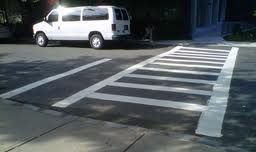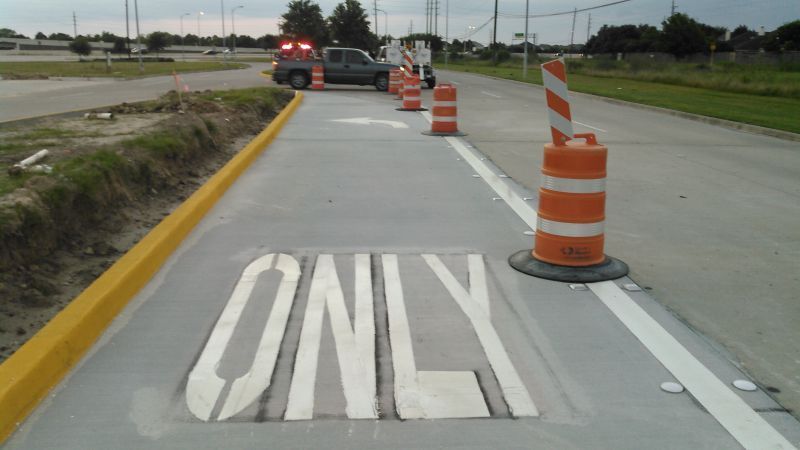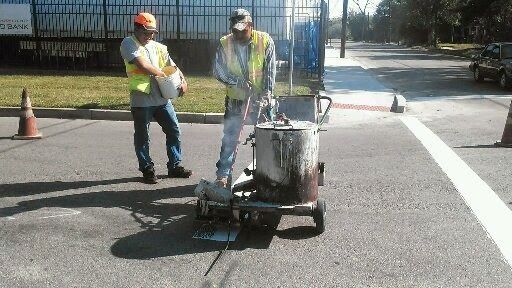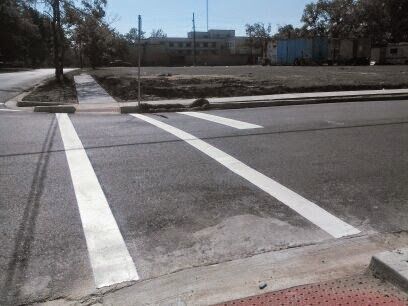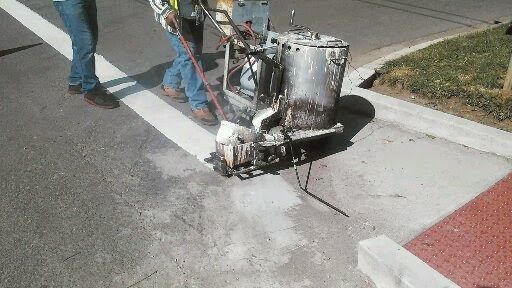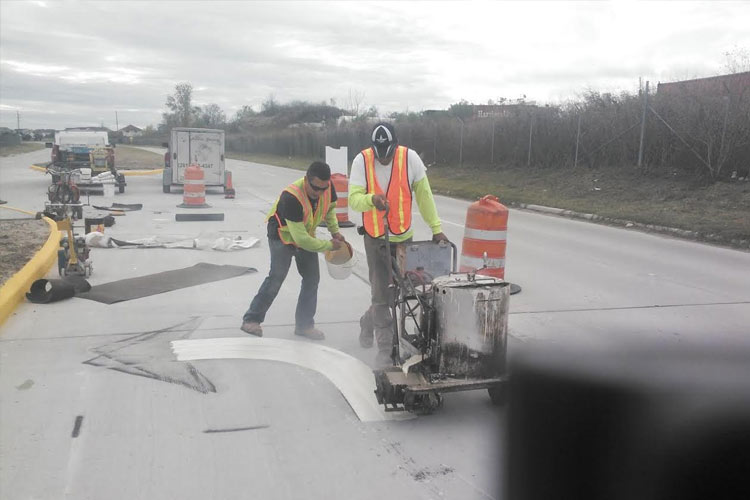We are insured, bonded and certified!
Thermoplastic Striping
The advantages of thermoplastic striping are threefold.
Thermoplastic pavement striping has dominated the road marking industry for decades. It is extremely durable, long-lasting, and reflective. It is the product of choice for almost every municipality in the United States. Thermoplastic striping will outlast traditional DOT paint by years, making it a very cost-effective road marking solution.
1. Durability
Thermoplastic striping is created by combining glass particles and resins, which are then heated within a specially designed applicator and bonded to the pavement.
2. Visibility
The glass beads used for the application of thermoplastic striping provide a built-in reflectivity. In fact, thermoplastic striping is the required marking material for most major roadways in the Southern United States.
3. Long-Lasting
The unique blend combines with specialized application to create a long-lasting bond that is more resistant to fading and skid marks than conventional paint methods.
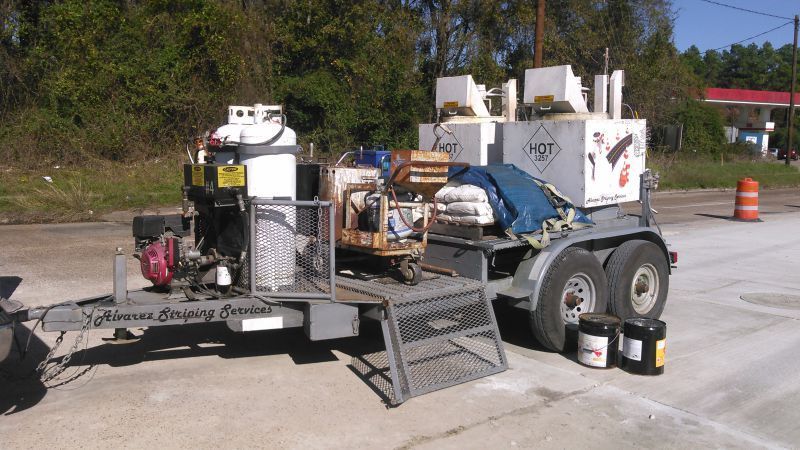
The purpose of this article is to explain how thermoplastic works and how it bonds to surfaces. Understanding how this product works will help you determine if thermoplastic will meet your needs and perform as expected. It will also help you to understand why the steps taken during installation are necessary.
By definition, thermoplastic is a plastic that when hot turns into a liquid and when cool hardens into a solid. It has a multitude of applications because of this characteristic. In general, the majority of preformed thermoplastics as well as regular thermoplastics are made up of Alkyd Resins, Polymers, Fillers, Glass Beads for reflectivity, and Pigments for color. The main ingredient is the Alkyd Resin. The other ingredients add desirable characteristics to the product such as wear resistance, reflectivity, and color.
For the most part, the bond that thermoplastic makes is a mechanical bond which simply means it grabs the surface and holds on much like a rock climber looks for crevices to grab while climbing. On certain surfaces, an additional bond is achieved when the hot thermoplastic and the hot surface melt and mix creating more of a cohesive bond. As stated before, the material becomes liquid when hot. When it is in this state it fills in every pore, crack, and crevice of the surface that it is on. When it cools it is locked into place. In the sections below this will be covered in more detail.
PreMark is a top heat-only product meaning that it is not necessary to preheat the surface to a predetermined temperature to install the product. Instead, you simply warm the surface to dry it, lay down your pieces, and heat from the top. When it cools it is ready for traffic. With the PreMark product, you can lay out all your pieces at one time and then apply heat. This makes applying the material easier when doing long runs.
If you’re looking for a company that provides high-quality asphalt striping and re-striping, Alvarez Striping is your first choice. Our specialists work individually with every client to ensure complete satisfaction. Our team has years of experience and possesses the skills to make sure all painted lines are uniform and as straight as possible. All of our team members are up to date on ADA laws and can answer all the questions that you may have. At Alvarez Striping, we know shutting off access to an entire parking lot can be tough financially and logistically. That is why we work directly with property managers and business owners to determine a plan to complete the job in a time frame that is best for your business. We will provide you with a diagram that identifies exactly what areas we are bidding to repair and how long it will take to complete. We also always use the highest quality paint to guarantee quick drying times which leads to your parking lot being blocked off for shorter periods.
Thermoplastic Striping Pictures & Video
Contact Us Today!
Contact Us Today!
We will get back to you as soon as possible.
Please try again later.
Premark on Asphalt
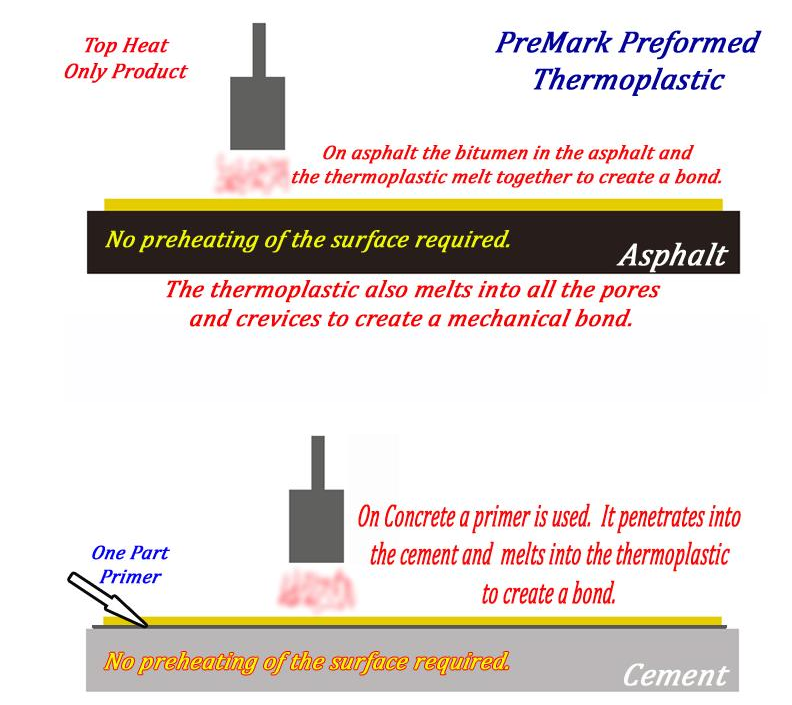
On asphalt, Premark becomes a hot liquid when heated to around 300 degrees. Since the bitumen in asphalt has a similar melt point the two materials tend to melt together. Premark also conforms to every nook and crevice and creates a mechanical bond as well. (see diagram above)
On cement, a primer is used first. The primer is made up of an acrylic resin in a solvent carrier. When applied to porous cement it penetrates the surface and carries the acrylic with it. It dries quickly and leaves a layer of acrylic on both the surface and beneath the surface. Then the Premark is positioned and heated just like it would be on asphalt. The hot thermoplastic melts together with the acrylic to form a bond similar to the one you would get with the bitumen in asphalt. Additionally, the material fills all pores and crevices and creates a mechanical bond as well.
All Rights Reserved | Alvarez Striping | Website by CityOf.com




